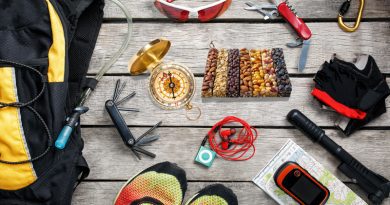
How do I choose the right fishing line?
How Do I Choose the Right Fishing Line?
In the quiet glow of dawn, as I stood by the river’s edge, my thoughts meandered like the water’s course—focused on one pivotal element of my gear that often decides between a triumphant catch or a tale of ‘the one that got away.’ The question was straightforward yet profound: “How do I choose the right fishing line?” This isn’t just about picking a string to tie to your reel—it’s about understanding a fundamental tool in the art of fishing.
Understanding the Options and Challenges
Navigating through the diverse world of fishing lines often resembles a journey through a complex maze, where each choice impacts your fishing success differently. This detailed exploration into monofilament, braided line, and fluorocarbon reveals their unique traits and suitability under various fishing conditions and techniques.
Monofilament Line
Monofilament, often affectionately referred to as ‘mono,’ has long been the staple choice for anglers worldwide. Composed of a single strand of nylon, it is prized for its versatility and ease of use. Its inherent buoyancy makes it ideal for fishing with topwater baits where you want your lure to stay near the surface. Another notable characteristic is its elasticity, which allows it to absorb the shock of sudden, sharp tugs—common when dealing with aggressive fish—thus reducing the risk of breakage.
However, monofilament is not without its flaws. It tends to have ‘memory’—a term used to describe the line’s tendency to hold the shape it’s been stored in, typically on a spool, resulting in undesirable loops and coils when casting. Additionally, monofilament weakens when exposed to UV light over time, necessitating more frequent replacements compared to other lines.
Braided Line
Braided line stands out for its superior strength and minimal stretch, transmitting every vibration and nibble directly to the angler’s hand. This makes it an exceptional choice for applications requiring high sensitivity and solid hooksets. Constructed from multiple strands of man-made materials like Spectra or Dyneema, braided lines are significantly thinner in diameter compared to monofilament or fluorocarbon of the same tensile strength, allowing for longer casts and deeper sinks.
Despite its strengths, the visibility of braided line underwater can be a disadvantage, especially in clear waters where fish are more cautious. It also poses a challenge in handling, as its slippery surface necessitates specialized knots to secure it properly, and its robust nature requires sharp, specific tools for cutting.
Fluorocarbon Line
Fluorocarbon is the ninja of fishing lines, virtually invisible underwater due to its light refraction index closely matching that of water. It sinks quicker than monofilament, making it an excellent choice for fishing lures at greater depths. Fluorocarbon is also highly resistant to abrasion and immune to UV degradation, making it durable in harsh fishing environments.
However, fluorocarbon’s stiffness can be a drawback, making it harder to work with, especially for beginners. Its characteristics can also reduce the effectiveness of topwater lures, as it tends to drag them down.
Tailoring Your Choice to the Conditions
Environmental Considerations
- Clear Waters: Fluorocarbon’s invisibility gives an edge in these conditions.
- Turbid Waters: The strength and less visible nature of braided line can be more beneficial here.
Target Species
- Large, Rough Fish: A durable, tough line like braided is preferable.
- Smaller, Finicky Fish: A less visible, sensitive line like fluorocarbon could be the better choice.
Fishing Technique
- Casting: Monofilament works well due to its flexibility and ease of handling.
- Trolling: Braided line’s strength and lack of stretch ensure better performance.
- Fly Fishing: Characteristics specific to each situation will guide whether monofilament or fluorocarbon is more suitable.
Implementing the Choice
Choosing the right line is as much an art as it is a science. Start with a line that seems to fit your most common fishing conditions and techniques. As you gain experience, adjust your choices based on what the environment and your target species demand. Remember, the perfect line is the one that feels right in your hands and delivers results in your specific fishing scenarios.
Resources and Tools
To implement this choice effectively, you’ll need a few tools and resources:
- Quality reels and rods designed to handle the type of line you choose.
- Line conditioner for monofilament and fluorocarbon to reduce memory.
- Proper scissors or line cutters for braided lines.
- A good tackle shop or an experienced angler to consult about local conditions and line preferences.
Conclusion
Choosing the right fishing line is much like choosing a path in the wilderness—each turn guided by experience, each choice laden with reflection. In the serenity of nature, armed with the right line, the river feels like a friend, the reel a trusted companion, and every cast a narrative of hope and strategy. Through understanding, experimenting, and adapting, we find not just the right line, but also a deeper connection with the craft of fishing.






